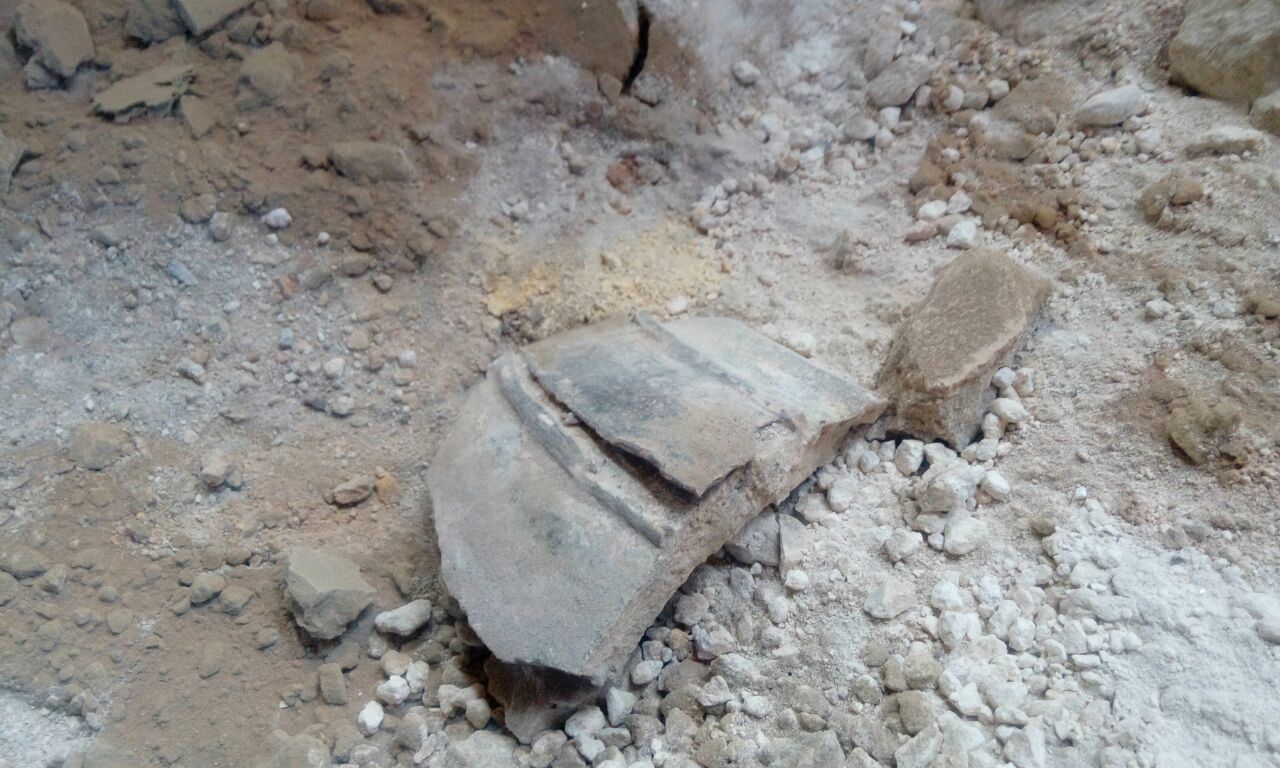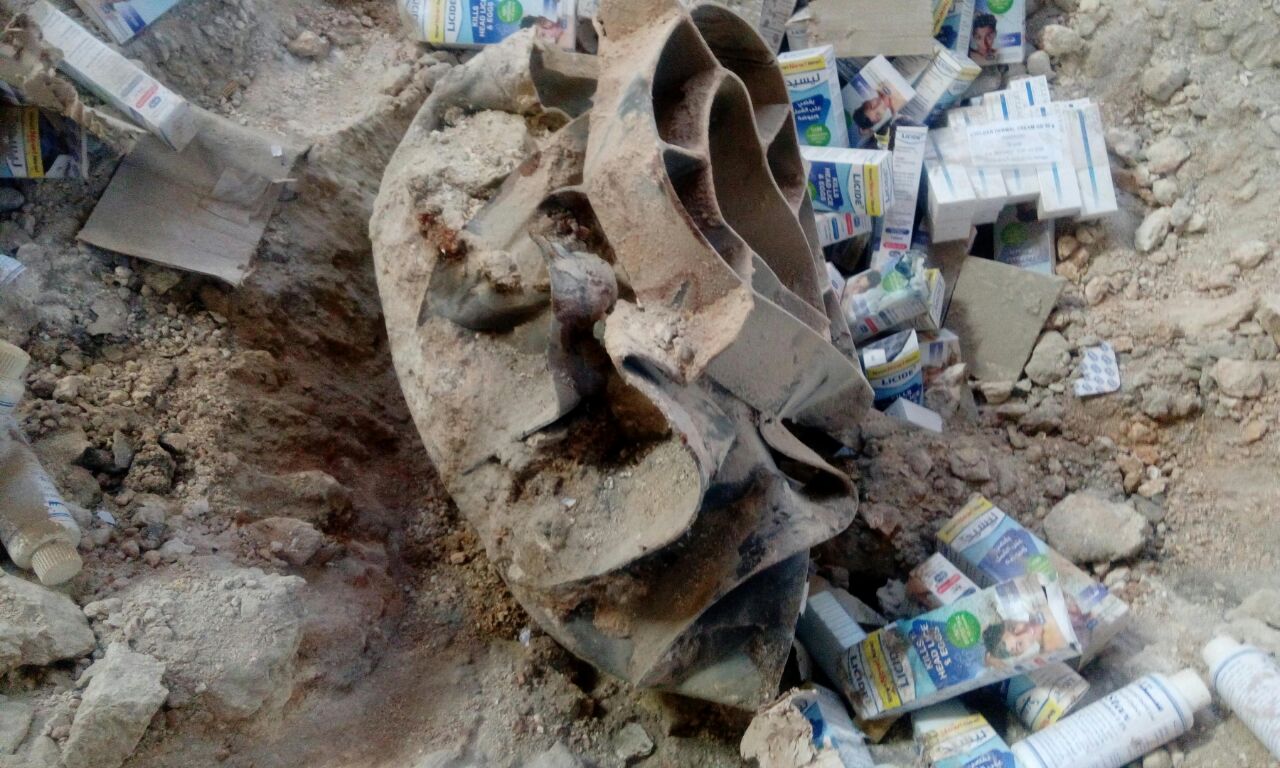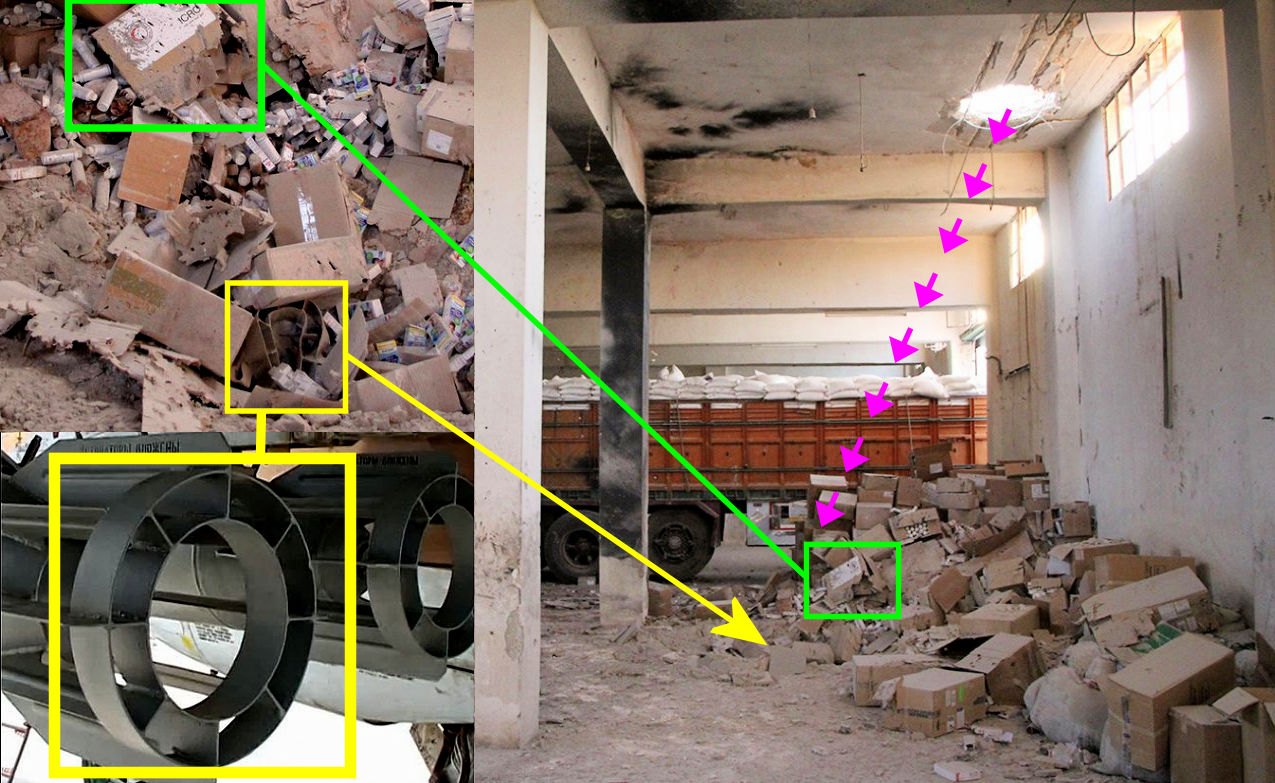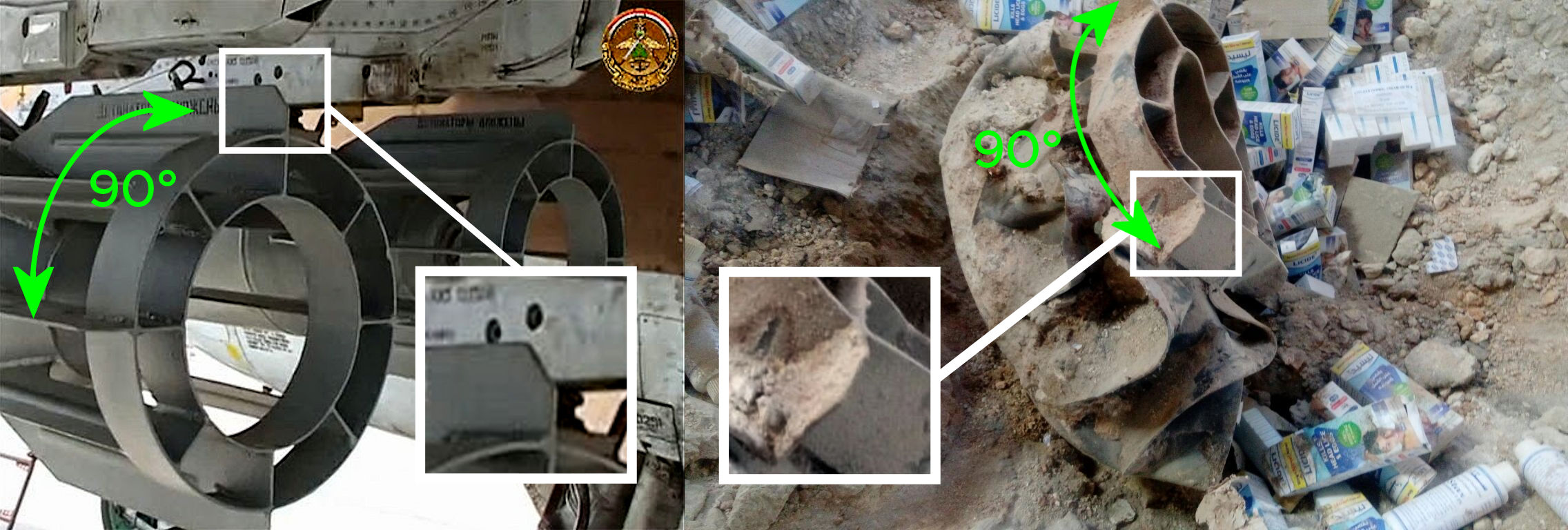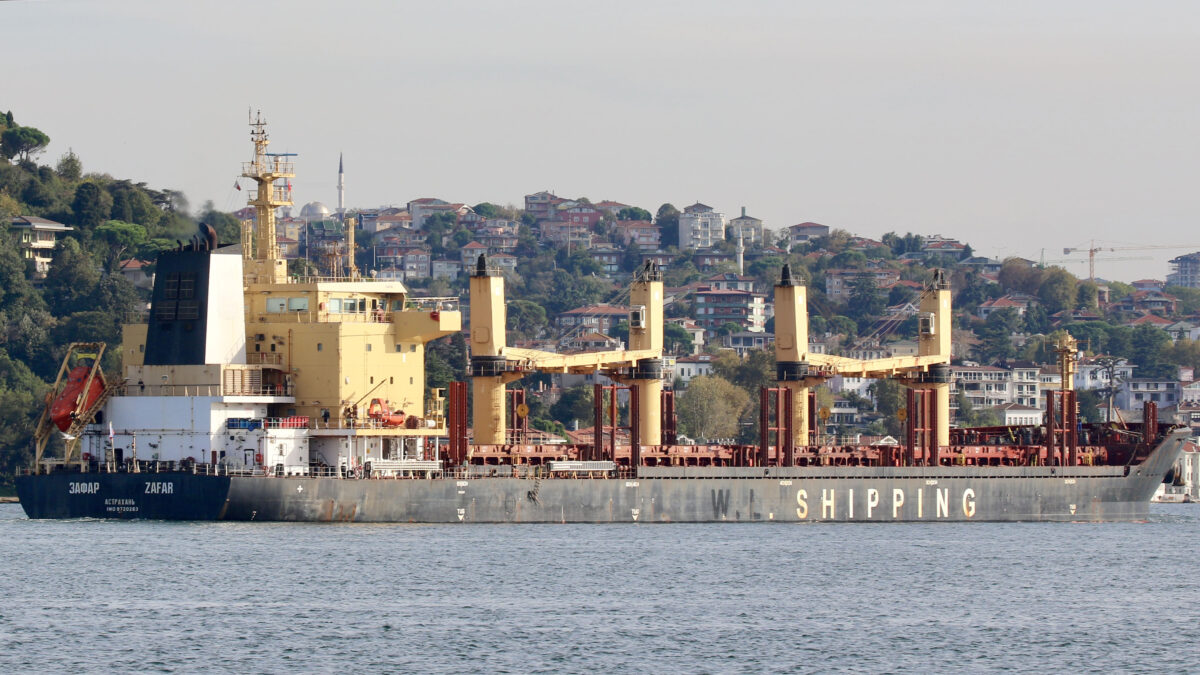Confirmed : Russian Bomb Remains Recovered from Syrian Red Crescent Aid Convoy Attack
Yesterday, Bellingcat published its report on the bombing of the Syrian Red Crescent aid convoy on September 19th. The report examined various aspects of the attack using open source information, including the comparison of what appeared to be the tail section of a OFAB 250-270 bomb that appeared in images from the attack, first published by CIT:

Conflict Intelligence Team comparison of debris found in crater and an OFAB 250-270. Source
Since the post was published the Bellingcat team has been in touch with the Syrian Civil Defence unit closest to the attacked site, who recovered and photographed two pieces of debris, including the object featured above.
In addition, an image showing the location of the debris was published, showing the likely entry point of the munition:
Based on this it is possible to make an accurate identification of the munition debris recovered as coming from the tail section of a OFAB 250-270 high explosive fragmentation bomb:
OFAB 250-270s are unguided bombs previously documented as being used by both the Syrian and Russian air forces extensively in their bombing campaigns in Syria. These bombs, originating from the weapons factories of the USSR and Russian Federation, are not used by aircraft manufactured by NATO countries, nor are they used by Predator drones.
The identity of the bomb is clear from the above comparison, the only question that remains is whether it was Russian or Syrian aircraft that dropped it on the Syrian Red Crescent aid convoy.
